
Welcoming Environments for LGBTQ Consumers in Care
Provides concrete strategies that organizations and practitioners can implement to increase access and improve responsiveness to LGBTQ individuals and families.
June was first declared as LGBTQ Pride Month in 2000. Since then, June has been a time to acknowledge a positive stance against discrimination and violence toward lesbian, gay, bisexual, transgender, and queer /questioning (LGBTQ) people to promote their self-affirmation, dignity, equality rights, increase their visibility as a social group, build community, and celebrate sexual diversity and gender variance.
LGBTQ Pride Month is also a time to bring awareness to the experiences of the LGBTQ community. LGBTQ youth are routinely harassed because of their sexual orientation. In 2015, it was reported that out of 10,528 middle and high school students surveyed 85.2% LGBTQ students experienced verbal harassment at school in the past year because of their sexual orientation, 57.6% felt unsafe at school because of their sexual orientation and 31.8% skipped a day of school in the past month because of safety concerns.
The National Child Traumatic Stress Network (NCTSN) has compiled a list of helpful resources for parents and caregivers, children and teens, mental health providers, child welfare and juvenile justice professionals, healthcare providers, educators and school staff, and policy makers.
A list of external resources related to LGBTQ Pride Month is available here.

Provides concrete strategies that organizations and practitioners can implement to increase access and improve responsiveness to LGBTQ individuals and families.

Offers teens information about the differences between sex and sexual abuse. This fact sheet describes when sex is used as a weapon, including the use of physical force, emotional or psychological force, secrecy about sex, and victim blaming.

Provides information to teens about staying safe while they are online.
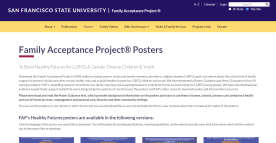
Download the Family Acceptance Project’s (FAP) evidence-based posters to educate family members, providers, religious leaders, LGBTQ youth and others about the critical role of family support to prevent suicide and other serious health risks...
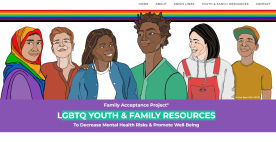
This website is a collaboration between the Family Acceptance Project® (FAP) and the Innovations Institute to increase family and community support for lesbian, gay, bisexual, transgender and queer-identified (LGBTQ) children and youth to decrease health and mental health risks and...
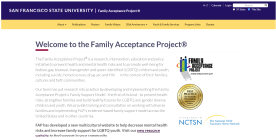
The Family Acceptance Project® is a research, intervention, education and policy initiative to prevent health and mental health risks and to promote well-being for lesbian, gay, bisexual, transgender and queer-identified (LGBTQ) children and youth, including...
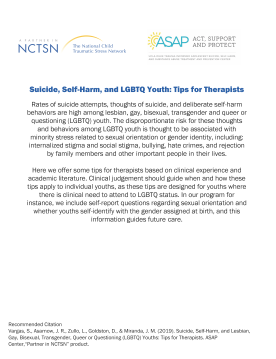
Offers tips to therapists who work with LGBTQ youth experiencing self-injury and suicidal ideation. The fact sheet describes challenges that LGBTQ youth face and helpful approaches therapists can take to support the youth they are working with.
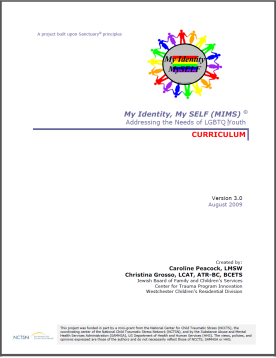
Aims to improve services for lesbian, gay, bisexual, transgender, and questioning youth in residential treatment.